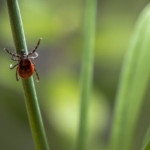Health Risks of Air Pollution
According to the National Association of Environmental Medicine (envmedicine.com), poor air quality can affect many organs in the body including the lungs, the heart, increase oxidative stress and inflammation. Air pollution specifically from wildfires can cause:
- Inflammation of the lung tissue
- Cardiac function dysregulation
- Oxidative stress leading to increased demand for antioxidants
- Release of cytokines which leads to systemic vascular inflammation and increased risk for vascular disease
- Increase in asthma and respiratory illness events
When it comes to respiratory health, the most important rule to follow is avoidance. Preventing exposure altogether is easier than trying to mitigate the effects of exposure once they occur. With wildfire smoke and poor air quality alerts, wearing an N95 or P100 disposable particulate mask can be very helpful if you spend prolonged time outdoors
How is the Air Quality in Your Home?
Wildfire smoke is only one reason for poor quality air. Pollen, dust, pet dander, off-gassing chemicals from new furniture, cleaning products, and mold can also cause unhealthy indoor air. Take an assessment of your your home (especially your bedroom where you sleep) and watch out for these common culprits of indoor air pollution:
- Mold
- Off-gassing chemicals from building materials
- Off-gassing chemicals from new furniture or new mattresses
- Tobacco smoke
- Chemical sprays used for pest control
- Pet dander
- Chemicals from cleaning products
- Air fresheners and fragranced candles
Keep Your Indoor Air Clean
While we aim for avoidance of air pollutants, it’s not always easy. Here are some strategies to decrease air pollution in your home.
- If you have central ducted AC and heating systems, set the system to “on” rather than “auto”. This ensures the air is being filtered constantly, rather than intermittently. Make sure your HVAC system gets regular upkeep, such as cleaning ducts and changing filters.
- If your system brings fresh air into the home, close the fresh air intake so that it operates in recirculation mode. This prevents outdoor smoke from getting inside.
- Consider using a HEPA filter within the home. Look for options that capture small particle sizes and VOCs. Air Doctor and Austin Air are great brands for air filters!
- Vacuum regularly to reduce the quantity of dust particles and pet dander in the home.
- Avoid using products that contain “fragrance” in the list of ingredients. Most fragrances are phthalate-based, which are aggravating to the respiratory system. Check household cleaning and personal care products and swap them out for fragrance-free options. Check out www.ewg.org for a list of fragrance and harsh chemical-free products.
- Add plants! If you’ve been in our office you know we’re plant lovers. Plants can filter out harmful chemicals such as VOCs, while adding a touch of nature to your space. Research has demonstrated the mental health benefits of adding plants to your work space and home!
Nutrition & Supplements Can Help!
Boosting your nutrition and antioxidant status through food and supplements can help combat the effects of poor air quality. Here are a few nutrients studied in humans that showed direct health benefits:
- EPA/DHA in fish oils and flaxseed oil – 1.6 grams (1600 mg) per day significantly decreased the effect of particulate matter on heart rate variability.
- Sulforaphane in supplement form – 30-50 mg daily for adults who lived in highly polluted cities increased the ability to detoxify air pollution. It does this by boosting glutathione’s ability to naturally detox the body.
- NAC (N-Acetyl Cysteine) in supplement form – 600 mg up to 3 times per day (1800 mg total) has been shown to reduce lung inflammation and support healthy levels of the body’s master detoxifier, glutathione.
- Vitamin C in supplement form – up to 500 mg four times daily (2000 mg total) + 800 mg of Vitamin E showed decreased airway irritation, improved airflow, and increased blood glutathione levels.
- If supplements don’t fit in your plan, you can get many of these nutrients through food (although at much lower doses). Double down on getting more fatty fish for EPA & DHA, cruciferous vegetables & broccoli seed sprouts for sulforaphane, citrus fruits, bell peppers and berries for vitamin C, and nuts/seeds for vitamin E.




